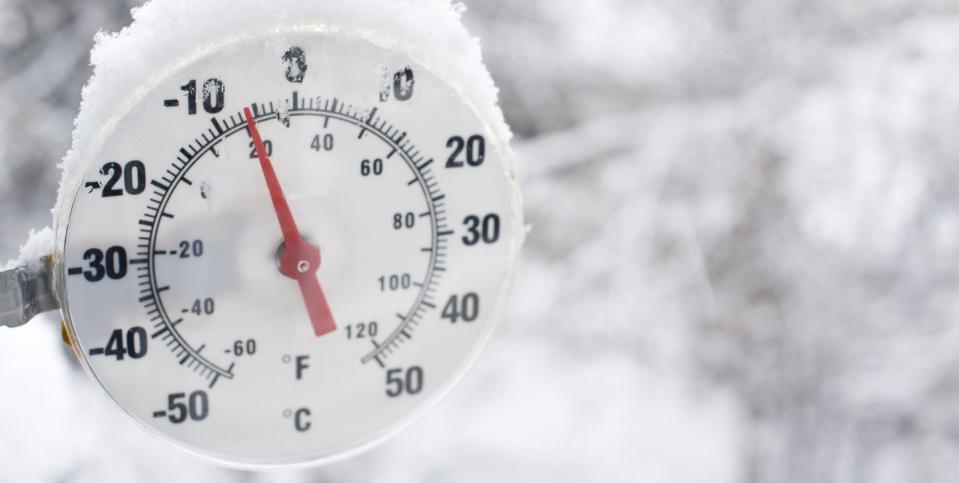The Polar Vortex Is About To Unleash The Coldest Air of the Season

AccuWeather reports that the polar vortex could cause a "major shift in the weather pattern" during the second half of the season.
"Polar vortex" is a meteorological term that describes the big mass of cold air that constantly hovers around the Arctic.
The polar vortex usually remains above the North Pole, but occasionally it weakens. When that happens, it moves south and circulates above the United States—bringing a whole lot of Arctic air with it.
Get out your parkas, people!
Most of the country has enjoyed a relatively mild winter so far, but those cozy temperatures won't last long. AccuWeather reports that the polar vortex could cause a "major shift in the weather pattern" during the second half of the season. In other words, it's about to get very chilly.
While the phrase "polar vortex" sounds dramatic, it's actually nothing out of the ordinary. This meteorological term describes the big mass of cold air that constantly hovers around the Arctic, spinning counterclockwise like a hurricane. The polar vortex usually remains above the North Pole, but occasionally it weakens. When that happens, it moves south and circulates above the United States—bringing a whole lot of Arctic air with it.
Meteorologists who have been monitoring the polar vortex predict that's exactly what's about to happen over the next few weeks. Oh, and it gets worse: The blast of cold air will pack some extra "shock value" because it's following several weeks of "well-above-average temperatures" across the northern half of the U.S.
"The anticipated waves of Arctic air will have their cold tasks cut out for them at first, but once the pattern gets rolling, a major surge in heating demand is expected, and winter storms and lake-effect snow that become intertwined in the cold blasts can hit travel and daily activities hard in parts of the Midwest and East," said AccuWeather Senior Meteorologist Dave Samuhel.
So, when should you plan to bundle up? The initial rush of freezing air is forecasted to sweep the country before the end of the month.
"An Arctic cold front is expected to move through the northern Rockies and northern Plains on January 18-19 then the eastern and south-central parts of the U.S. between January 20 and 21," Dave said. "Even though temperatures may remain above average in the wake of the leading edge of the cold air, it will bring a 10- to 20-degree Fahrenheit drop as the front passes through."
Yes, he really did say an "Arctic cold front" is coming. Happy 2021!
You Might Also Like

 Yahoo Finance
Yahoo Finance 